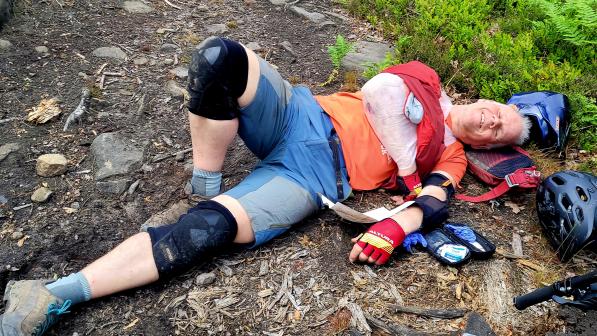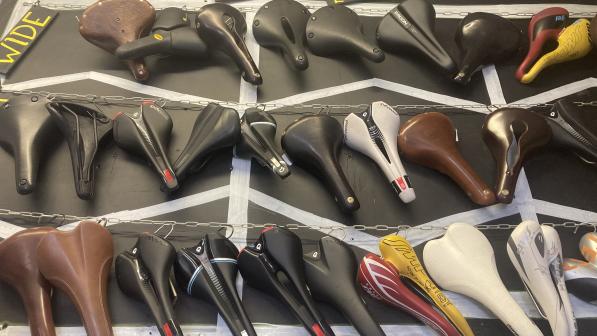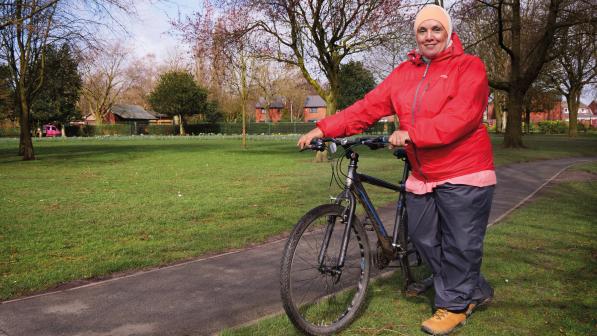Guide to first aid kits for cycling

While it’s true that cycling is a lot safer than perceptions – and certain sections of the media – would have us believe, accidents can happen. It’s best to be prepared – especially when cycling with youngsters. Dealing quickly and calmly with a crying 10-year-old with a skinned knee is an essential part of cycling with children.
For this you’ll need the right first aid kit. You can buy ready-made ones, but with a little knowledge it’s easy to assemble your own first aid kit. Below, we look at the equipment you’ll need to administer any necessary first aid when on a cycle ride.
Possible injuries
The most common injuries on a cycle are cuts, abrasions and bruises. These are relatively easy to address on the go, and the quicker you do, the quicker the injured party will be back on their bike.
Also common are musculoskeletal issues – aching joints or muscles. This might simply be because you overdid it up that hill or maybe there’s an issue with your bike set-up. Then there are saddle sores and discomfort ‘down below’.
These problems will take longer-term work to fix – changing your set-up or investing in a new saddle, for example – but you might need to address them while out on the bike as they come up.
Also possible are insect bites and stings, burns and sunburn.
More complicated are fractures and head injuries. For these, you’ll want to treat the patient as well as you can, keep them comfortable and call the emergency services.

Types of cycling
What you need in your kit will be determined by what sort of cycling you’re doing and who you’re cycling with. For shorter, mainly road-based rides a basic kit will suffice, but long-distance bikepacking far from civilisation will require something a lot more comprehensive.
Chris Alston, Cycling UK’s senior training officer, says: “First aid kits should be scalable dependant on type of activity, who is participating and how remotely you are operating.” See the sidebar for Chris’s advice on what he packs.
On shorter, easier road rides and commutes, cuts and bruises are likely to be your most regular issue. A few waterproof plasters of differing sizes, dressings and antiseptic wipes will likely cover your needs. For longer rides, bandages, surgical tape and safety pins would be good additions, with some sunscreen in summer. Sterile wash to clean eyes and wounds would also be useful. Burn cream can help soothe heat burns and road rash.
“I would encourage participants to wear sun cream and/or sunscreen when sending out the kit list,” Chris advises, “but always take a small bottle along to the start point just in case.”
Mountain biking brings with it challenging, unpredictable terrain which could result in falls causing fractures or head injuries, exposure to the elements and a greater possibility of insect bites and stings. You might want to add bandages, insect repellent and tweezers – for removing stings and splinters – to your kit.
Bikepacking often means being far from help, as well as being out in all weather conditions and at night. Consider a lightweight foil blanket, while a light is necessary to treat any injuries in low light conditions.
In all these situations, a fully charged mobile phone is essential. A portable charger will help give peace of mind.
Hand sanitiser, surgical gloves and a small pair of scissors, plus a small, waterproof bag to put it all in will also come in handy. But keep in mind that you’re unlikely to need all of this in all situations – adapt to your specific needs. You’re unlikely to need a safety blanket when on a summer commute to work in summer, but in a remote off-road location in winter it could make all the difference.
Who you’re with
Even if you’re cycling in a big group, never assume that ‘somebody else’ will have all the necessary kit. Find out in advance who – if anyone – is responsible for first aid, and if you’re cycling with younger or less experienced riders then you’re that person. Even on a club ride, you should take responsibility for your own health and safety.
It’s one thing carrying a first aid kit but knowing how to use the items contained within it is vitally important
Chris Alston, Cycling UK senior training officer
Volunteer ride leaders aren’t legally obliged to carry first aid kits or administer first aid, and Cycling UK strongly advises that only qualified first aiders carry out first aid.
However, many clubs and groups require their ride leaders to hold a first aid certificate and to ensure they have the relevant kit. If you’re leading a ride, even as a volunteer you have a responsibility to make sure everyone comes home safely.
If you’re riding with children, keep in mind that they’ll have different needs – mostly to do with more reassurance than that needed by adults. They also might have problems swallowing tablets; ibuprofen gels would help here.
What to do
Once you’ve got your first aid kit, you need to know how to use it. “It’s one thing carrying a first aid kit but knowing how to use the items contained within it is vitally important,” Chris adds.
“It is highly recommended that at least one person in a cycling group has undertaken formal training. Additionally, knowledge of CPR is an essential component of first aid and obtaining knowledge of how to locate and use an AED/defibrillator is recommended.”
With cuts, abrasions, road rash and so on, clean the wound carefully using antiseptic wipes. Remove any road debris from the wound using tweezers. If gravel or glass are deeply embedded in the cut, don’t try to dig it out yourself. Call the emergency services and be prepared for a trip to A&E. Cover using a plaster or bandage, depending on the size of the wound. If the cut is large or won’t stop bleeding, seek medical help.
With head wounds and fractures, it’s more a case of keeping the casualty as comfortable as possible while waiting for emergency services to arrive. Don’t move the casualty unless they’re in danger. You can secure a broken arm using a triangular bandage as a makeshift sling, but be sure you know what you’re doing. If there are any open wounds, carefully dress them as above.
Says Chris: “Improvisation is possible when looking to immobilise upper limb injuries. Instead of the traditional triangular bandage, first aiders may opt to use clothing or equipment carried for use on the ride. Simply folding a jacket up over the arm or using an inner tube as a sling will suffice.”
Using hand sanitiser and surgical gloves will help minimise the risk of infection. This is especially important if treating others, particularly children.
It can’t be overstated that you should only administer first aid if you have the relevant knowledge. Cycling UK runs two first aid courses. Bike First Aid is a one-day course covering typical incidents and injuries sustained by cyclists.
More comprehensive is First Aid in the Outdoors, a two-day course designed to provide you with the confidence, skills and experience to manage injury situations. It also covers longer-term immediate care where road-going ambulance and possibly phone access is not immediate.
Both courses can be booked for private groups or your Cycling UK-affiliated club or group. See our Cycle courses and training page to fill in the form.
Chris explains: “Cycling UK’s one-day Bike First Aid course is suited to those that lead on-road rides where access to the emergency services is likely in a short timeframe.
“Those looking to obtain mountain bike leader qualifications and lead groups off road must hold a minimum of a 16-hour Outdoor First Aid certificate. Our two-day emergency First Aid in the Outdoors training accredited as part of the Expedition Care Programme meets this requirement.
“Both courses exceed the requirements for Emergency First Aid at Work qualification.”
Painkillers are something of a controversial subject. “This is a contentious issue as it’s not considered best practice for first aiders to recommend or administer pain relief,” says Chris. “However, it is suggested they adopt a common-sense approach when asked by an adult for pain relief for a problem such as a headache.
“If pain relief is given out then it must be something available off the shelf rather than over the counter or prescription medication. Many of the expedition-type first aid kits come with ibuprofen and paracetamol.
“An exception to the rule would be aspirin. This can be carried in case of suspected heart attack. Prior to administering it to a casualty, first aiders should rule out the possibility of an allergic reaction and ensure the casualty is above the age of 16.”
Keep in mind that most of the time nothing will go wrong on your ride. Serious injuries such as fractures and head injuries rarely happen. But it’s good to be prepared if things do go wrong.




